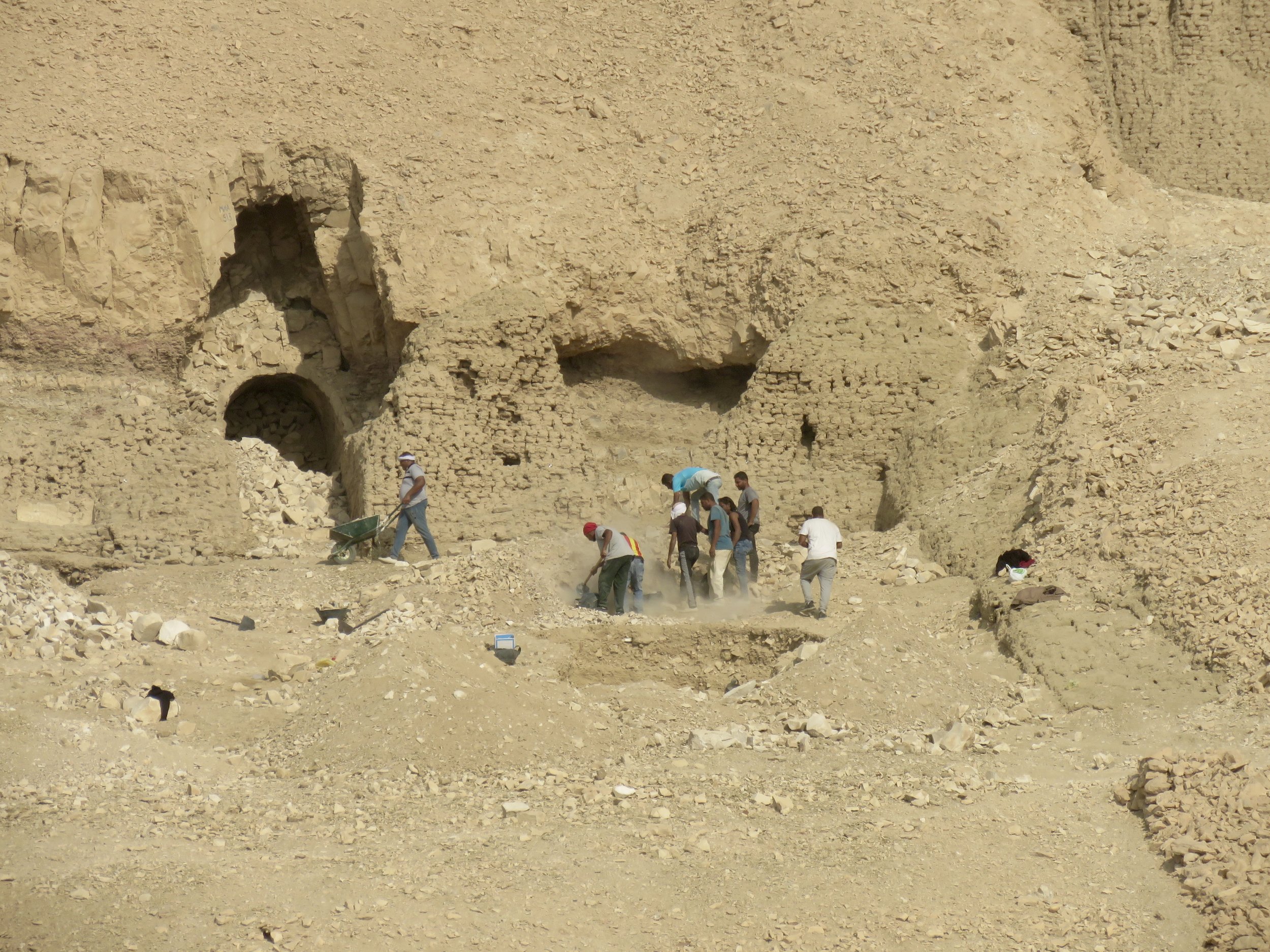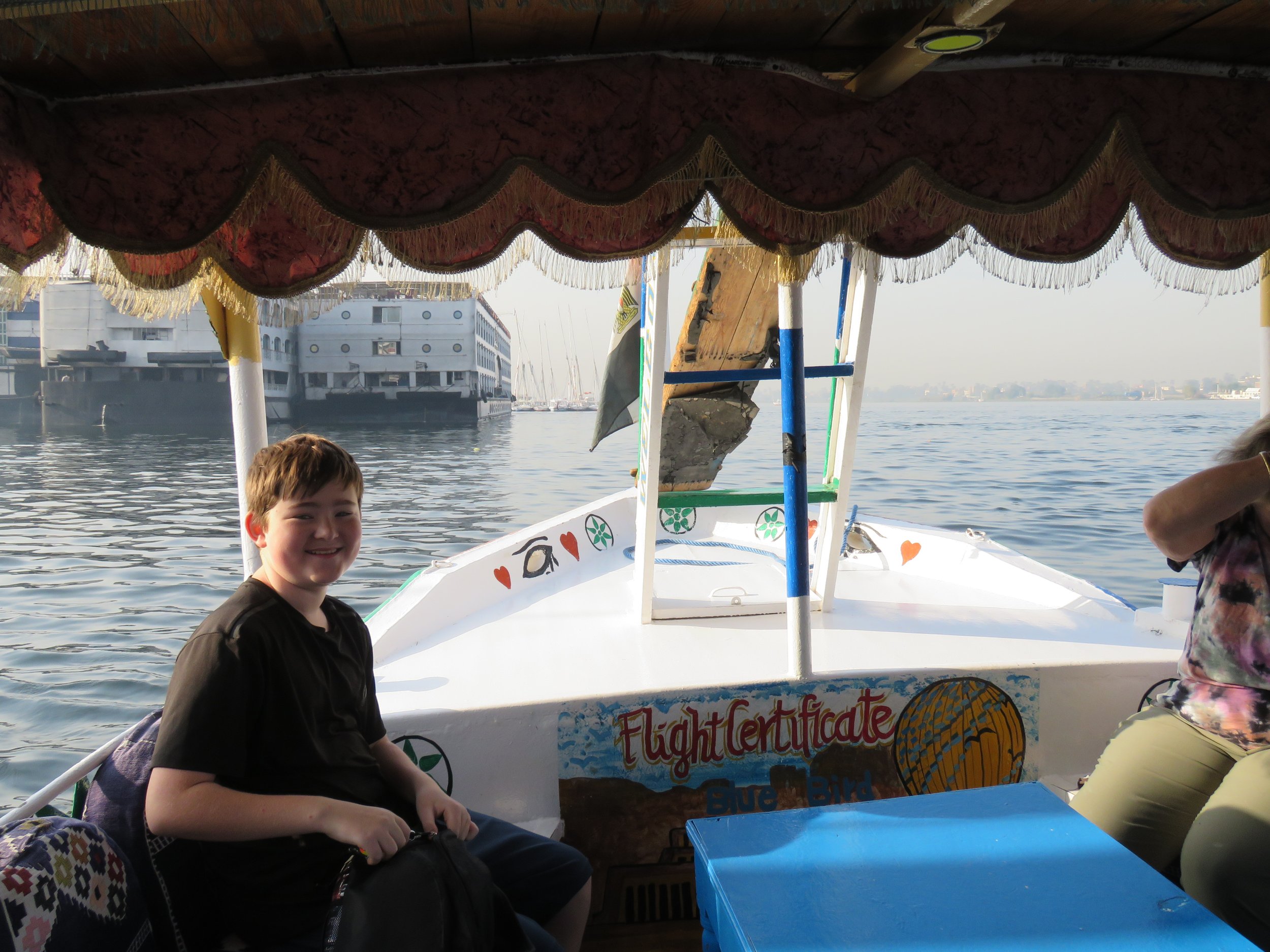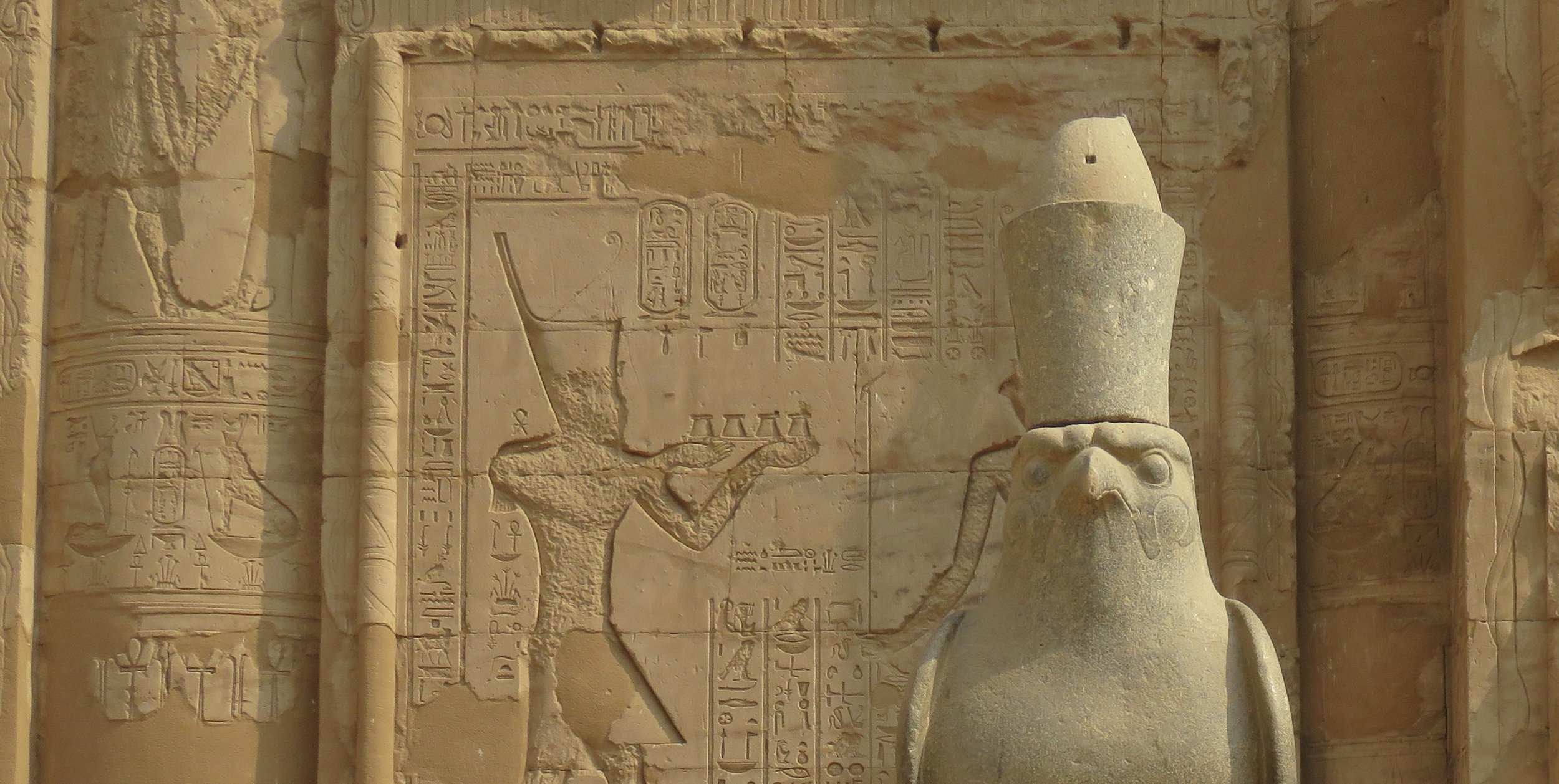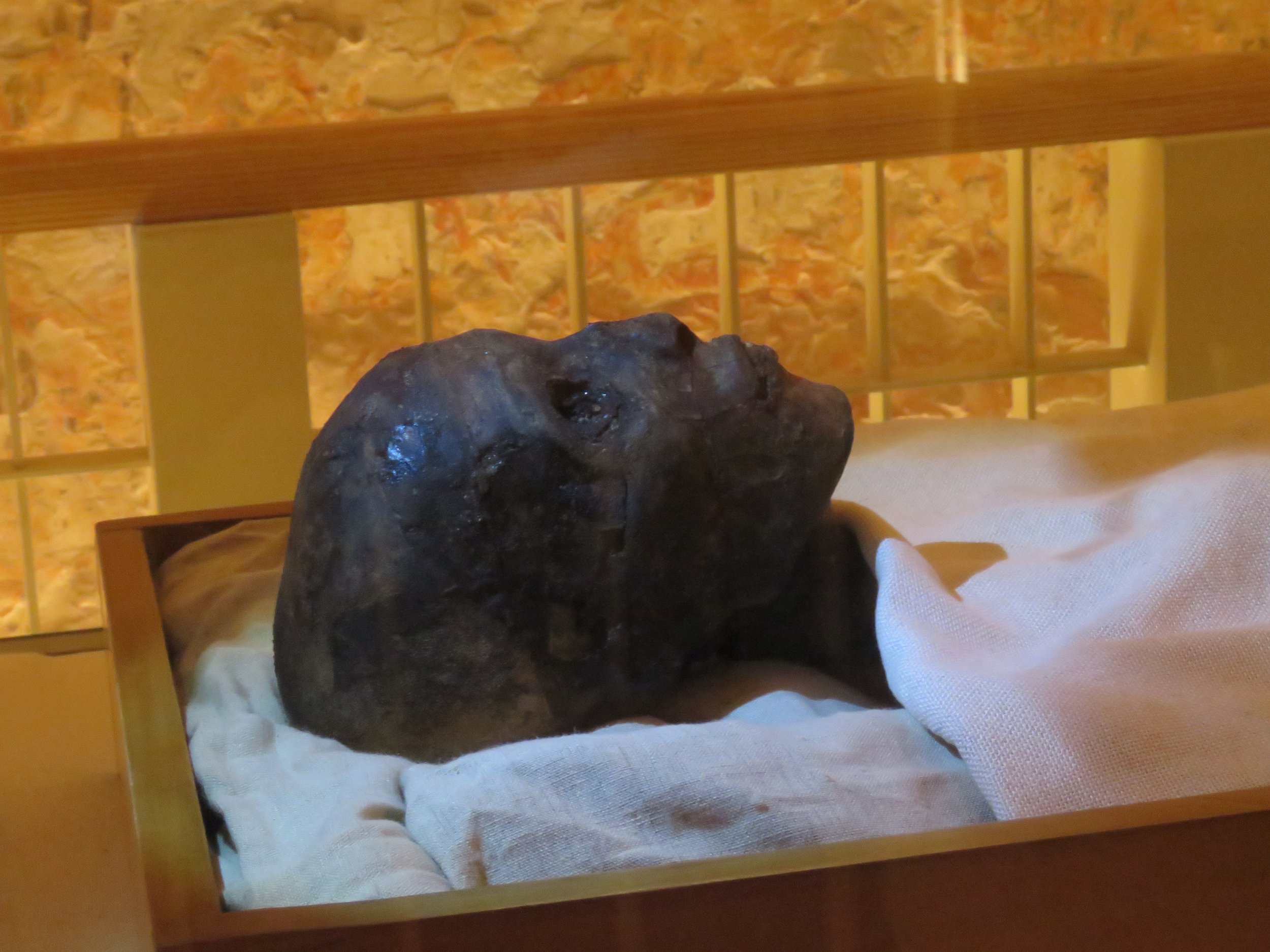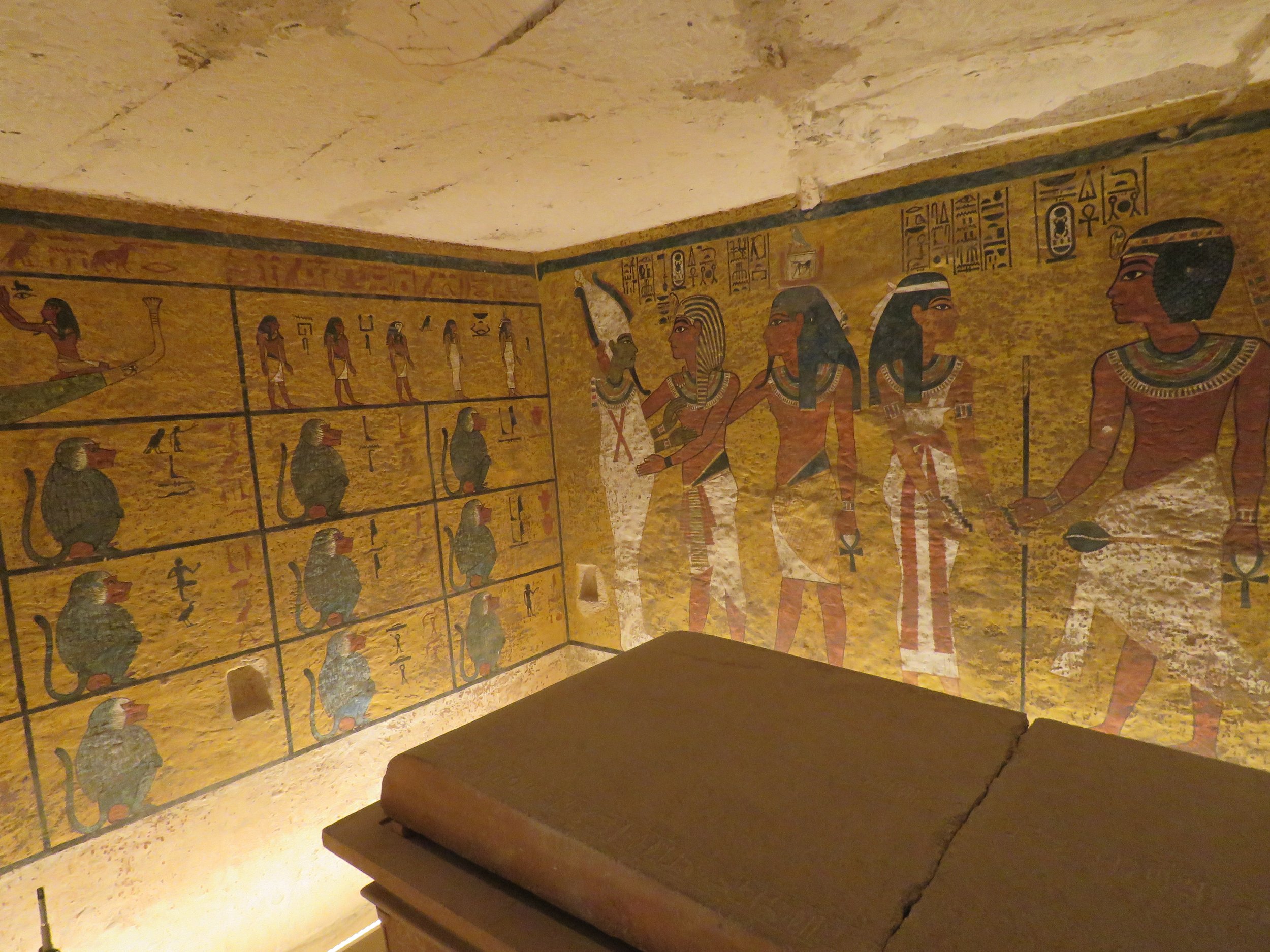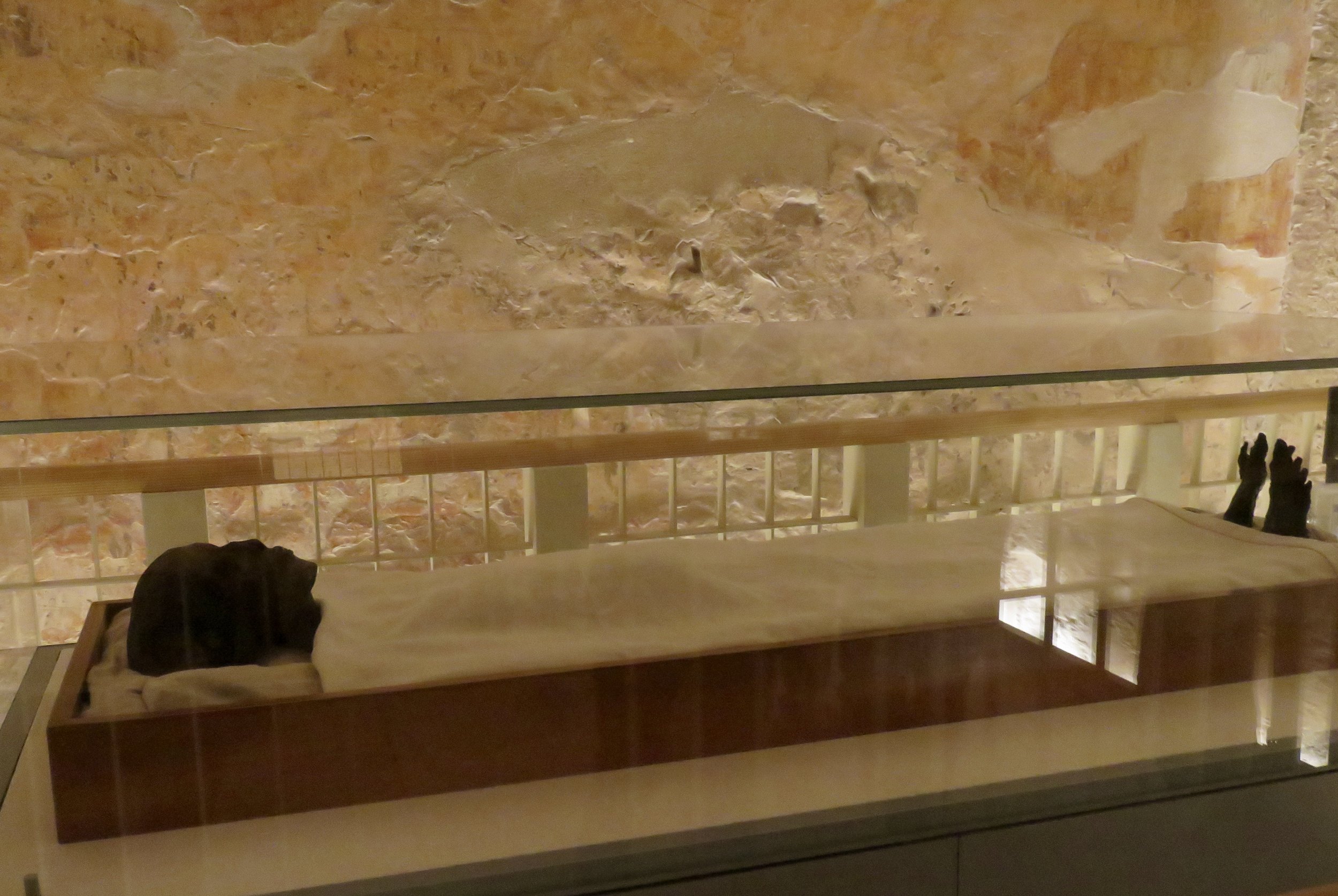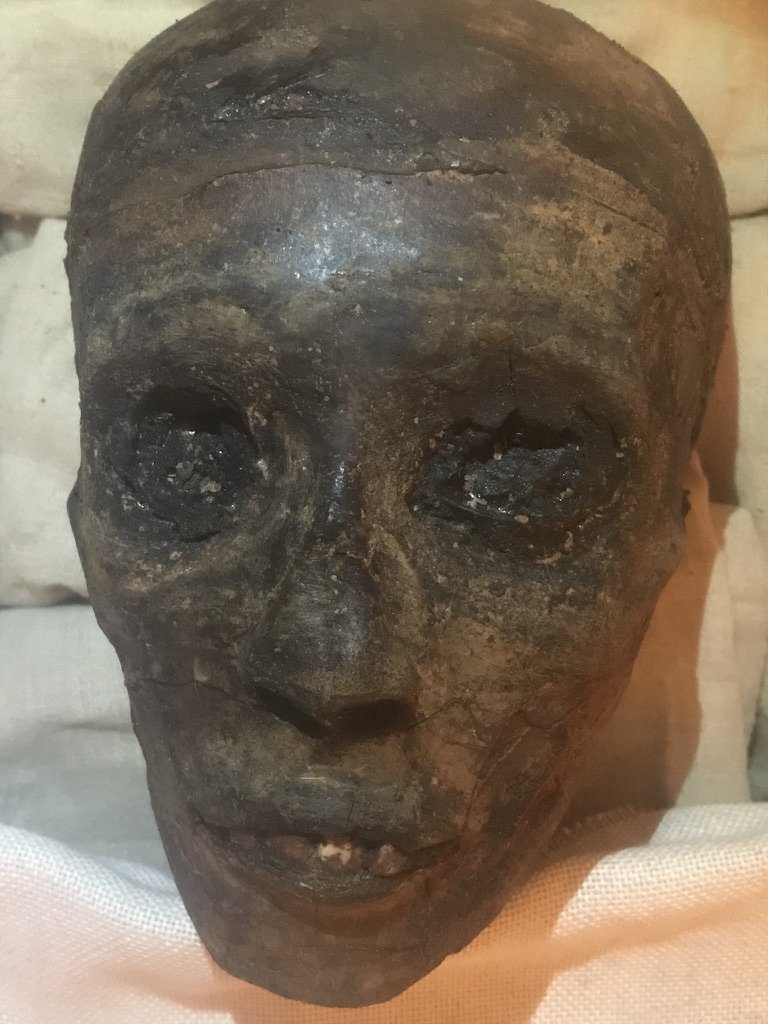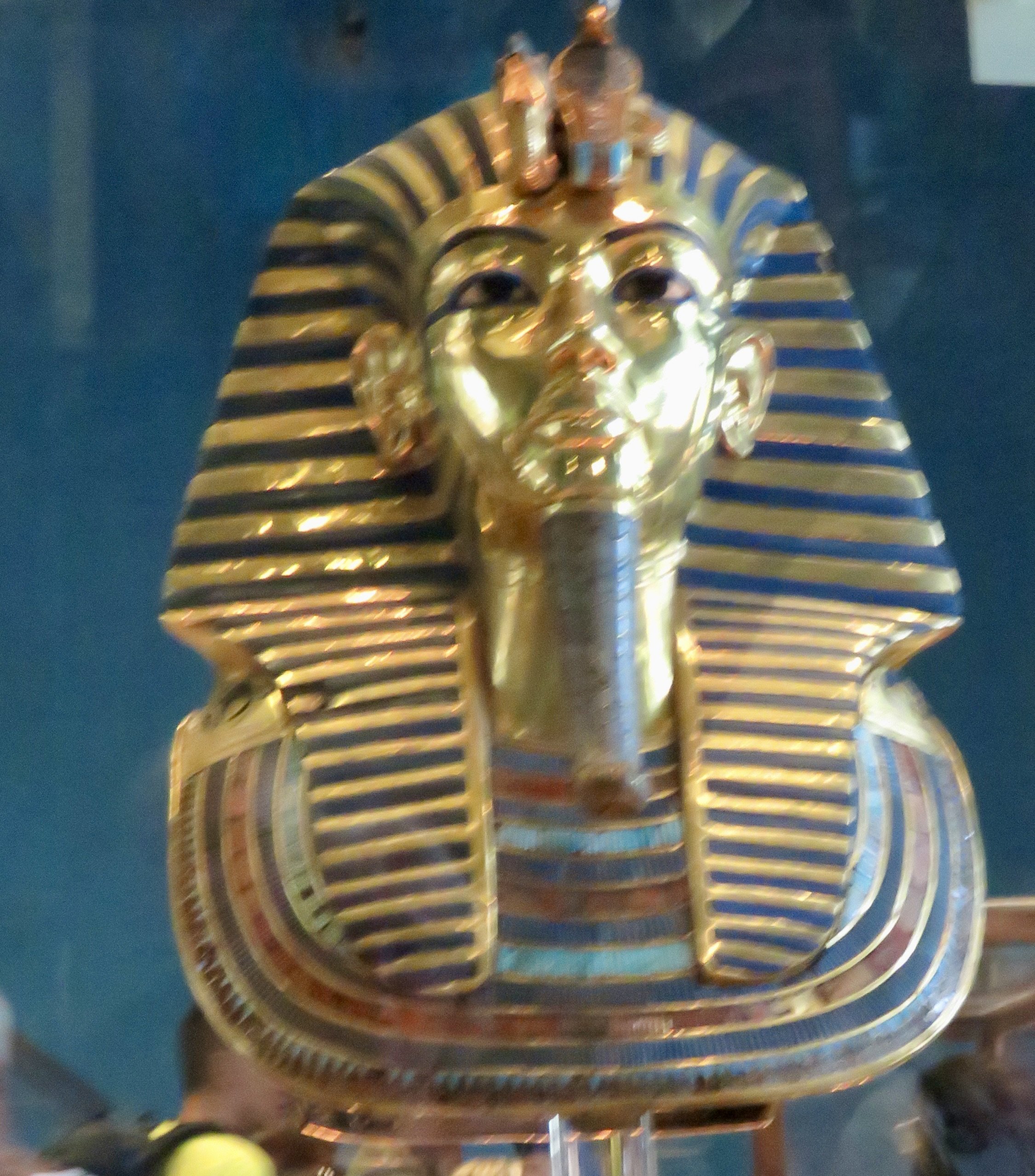Archeologists at work in the Valley of the Kings.
The little ferry takes us across the Nile to the west bank. The bus drives us along banana palms, mango trees and green patches of vegetables among pale sand of the desert. Small houses are weighted down by corrugated tin roofs and women in long abayas and headscarves stride along dusty dirt roads. Donkeys carry loads to markets.
Ancient Egyptians did not live on the west bank of Nile. This was the side of death. Each night, the sun died on the west side. But, if all went well, it was reborn each morning on the east side - the side of life. So people lived on the east bank. Tombs and mortuary temples were built on the west side of this all important river. Each year it flooded, until centuries later when dams controlled nature, depositing fertile silt on the land so crops could be grown.
Hatschepsut’s Temple
Then we see it - the most impressive temple of all: Hatschepsut’s Temple. It doesn’t look ancient. It doesn’t look like a tomb. It makes me think more of a huge powerplant, some ultra modern office building. But this mortuary temple of Hatshepsut (pronounced Had-shep-soot) was built between 1472 and 1458 B.C.E.!
Horus, the falcon-headed god.
One of the most powerful female pharaohs to ever reign, Hatschepsut ordered the construction of this massive complex. Not only would it serve as her tomb and as tribute to her long reign, it also was built as a place of worship for Horus, the falcon-headed god.
Sheltered in the back by towering sandstone cliffs, the complex features huge ramps, long walkways lined with pillars, many rooms and court yards. There are still wall and ceiling paintings in vivid colours visible, even after a few thousand years. As with the pyramids, you can’t walk around here without wondering how they did it? How did they design and construct without machines and more sophisticated equipment?
The Valley of the Kings is an area of tombs and excavations - an archeologist’s paradise. They keep unearthing more and more treasures here but none as earth shattering as the discovery of Tutankhamun’s tomb.
This vast desert area hides under its brown, dry surface a vast area of burial places and mausoleums dating back to around 1,500 BCE.
In the Valley of the Kings.
Pharaohs, queens and high priests were all buried here on this west side of the Nile near Luxor. Their bodies were mummified and they were send to the other side with enough supplies to support an afterlife of luxury.
We keep pinching ourselves: we are in the place we saw in so many documentaries!
In 1925, after many years of persistent searching Howard Carter discovered the grave of Tutankhamun, a king who died at age 18. When the reign of a new pharaoh started, work on his or her future grave also started. Tunnels and rooms were dug and decorated. If a king lived a long life, the tomb was finished. But in the case of Tut, there wasn’t enough time for elaborate paintings and hieroglyphic stories.
Nico and I descended along a narrow, sloping walkway under ground until we came to a small square room. The bright yellow walls still held paintings of large figures. A solid stone coffin stood in the middle of the room. And next to it, in a display case - was King Tut himself. 3,000 years after his death, we came face to face with him. Inside his coffin, Carter had found his sarcophagus. Inside it, was the now famous golden mask and, finally, his mummy. His face stares up, his toes point at the ceiling. It made us stare in awe that this was a living human being whose body stayed preserved for so long…
Later, in Cairo, we saw the granite sarcophagus as well as the golden mask and we were able to picture all parts together to understand how King Tut had been buried.
Did his soul ever reach the heavens or the gods he believed in? Pondering these questions, I stood on the deck, that night, in the silent darkness looking over the mysterious river Nile as our ship slowly plowed its way upstream. Suddenly I saw a brilliant red and yellow flash and a, quite sustained, display of what I thought was fireworks. But where did it come from? I didn’t see houses on the shore. “Did you see those fireworks?” I asked a couple nearby. “That,” they smiled, “was a meteor!” I’d seen not one but two scientific miracles in one day in Egypt.
Resources:
• https://www.history.com/topics/ancient-history/tutankhamen
BOOKS - scroll down to ‘E’ for Egypt.

